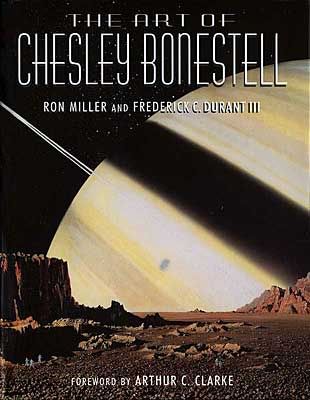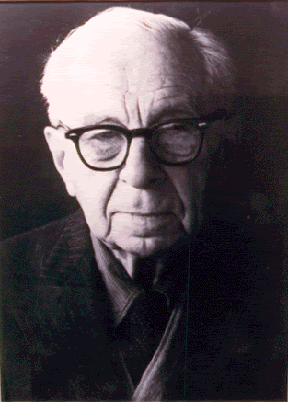In the Wilderness I Find My Moses
It is possible you detected in me that I am without direction after my excommunication from the OMA. It is true, I was very sad. I impulsively flew to San Francisco and rent now a flat in the Bayside Village. I was thinking it is pretty enough, sterile, impassive - suitable for my mood.

At night I can walk to the street and there is the nice view of the Bay Bridge, ghostly under the moon, rumbling under the tires of police cars, sport utility vehicles and container lorries.
Yesterday morning I saw the man who rented this flat to me with a group. I followed along and discover these are the students of architecture! I try to explain that this is not a model for imitation, it is an ersatz, a toy castle, it is not worthy of them. Then the man says I violate my rental agreement and tells me I must go read it again before I can criticize the architecture. I shall contact the appropriate housing authority to report this.
I walked for a long time and became lost... In a small store I have discovered this book:

You have seen the work of this man before. But to see it all before you is the revelation. He paints like the angel, not just planets, but rockets, spacemen, cities, dreams, nightmares, visions. His visions of San Francisco are elegant, visionary. His New York is blown up two times, once with the atomic bombs, then with the meteorite!
He learned his trade of the Hollywood, painting backgrounds for movie such as The Magnificent Ambersons and Citizen Kane. In this way he finds techniques to create paintings that are almost like photographs.

I can never meet this man who had for friends Arthur C. Clarke and Werner von Braun - he has died in 1986. But this is my new hero, this great spirit - he who has given us both dreams and nightmares - all the possibilities of life.



6 Comments:
Monsieur -
I must again haul you to aesthetic woodshed.
Your space illustrator is a highly skilled and inventive technical artist, but it is bereft of aesthetic or philosophical risk. He primarily illustrates other men's imagination - : and this imagination is an imagination of disconnection from humanity, an imagination of technical prowess and fantasies of the unquestionable might and capabilities of engineering; in the case of Von Braun, particularly I suggest to a Frenchman, this is a questionable road to travel. As art, it is a toy castle itself, pleasant, and it would be mostly harmless, except for the dark, unexamined hint of rah-rah for the technological superman.
It was such images, after all, that served, and were precisely commissioned, to propagandize the military industrial complex. That there were precisely equivalent images in the Soviet Union should tell you something.
It is his unwillingness- apparant throughout the work- to examine his own assumptions that kept him an illustrator. This work exists only in the shadows of the engineers. Norman Rockwell, by constrast to this amenable fellow, was a font of existential crisis.
Perhaps to an architect, this is the penultimate function for art: to illustrate the ideas of men of superior genius. It would be in keeping with the general opinions of the profession.
I instruct you to immediately view a Van Gogh landscape in person, to cry in humility before the majesty of life, or see a large Anselm Kiefer painting, and cry in the infinity of tragedy. That might prove a treatment for this chronic disease of disconnection.
You will find in architecture many uninhabited rooms.
Like contesting death with a Sicilian, the debate of existentialism with a Frenchman puts you in a bad place.
I instruct you to watch a praying mantis devour her mate then explain to me your majesty of life.
I believe you will have a different view of this man if you see the picture he made of two atomic detonations in New York City for Look magazine. He was illusioned by the darkness of technology, and was not afraid to stare death in the face.
And the von Braun, yes, this is an ambivalent character. von Braun made weapons that killed people, and also made possible the only triumph of America after WWII - the moon landing.
There is a type of condition that dooms one to be a prisoner and slave. It is the condition of being human. What was Einstein but a butterfly in a jar to the Princeton University? von Braun, too, was a prisoner - first of demons, then of angels.
von Braun wrote of Bonestell: "[I] learned to respect, nay fear, this wonderful artist's obsession with perfection. My file cabinet is filled with sketches of rocket ships I had prepared to help in his artwork—only to have them returned to me with…blistering criticism."
Bonestell said "we are just sophisticated animals." He did not believe in afterlife, after death he said, there is just blackout. I do not find this existentially insufficient.
Unless you are a religious man?
Von Braun was no slave - he was a quite literally a slavemaster, to the deaths of many thousands of people, and his defense at the end of the war was that he didn't really pay attention to that part of it.
Monsieur, you have shown much interest in illustration and written much of your indifference to art; fine, but I am calling you on it.
I come to believe that you affect this indifference, now apparantly extended to life itself, so that you may be relieved of the burden of choosing when choices have meaning. If these artful products are merely permutations of subject matter and style, the choice has no particular consequence. You flitter about to and fro, as a Mantis to her next husband. Attempting to escape from the necessity of choice would make you very safe, but a very bad existentialist indeed.
Curious to accuse me of religiosity, but I have no need of this indulgence. I describe his work as illustration with a precision of meaning. It is perfectionist - but a dentist may also have this quality; of course Von Braun loved it: it effectively creates a compelling image of this technology's uses. This is fine rendering and illustration but it is not really Art, anymore than the your average Starbucks is really architecture, nor was it, I believe, meant to be. It was designed, conceived and executed as an imaginative illustration of an externally generated concept, for commercial reproduction rather than exhibit, and commissioned specifically for that purpose. The difference is between copy and literature, and it is noted that an ad may read beautifully while a poem can be ugly. The difference is stark to anyone who writes them.
I have seen a number of exhibits of paintings precisely in this realm: they are fascinating, and they have real beauty to them, but there is a reason they were exhibited at Boeing. Not from lack of skill or intelligence on the artist's part, but from lack of philosphical ambition IN THE WORK, the essential component of what we have come to call Art, at least in the last four or five centuries. There is an element here of visual conceptualization which is sophisticated, but not appreciably different in purpose from architectural paintings of the same period.
Monsieur, I must say, for a putative architect, it is almost as if you have never sat down and designed or built any buildings, never picked up a pencil and confronted the structured confusion of drawing a tree, or a woman, or a Mantis, for that matter. If you had struggled with this, you would not be given to conflating an affectation of indifference and rationality. It is this work that you re-present, free of self-evaluation, that is existentially insufficient.
I notice when we have these friendly exchanges none of your friends of Alaska decides to join us. Why is that, I wonder.
In all events, I must explain that I distrust intellectual engagement to the object of appreciation. My test is simple - if I must have cogitations to decide a thing it is beautiful, I say it is not.
If it is truly beautiful I know this in one second. I do not deny the validity of thinking in the matters of the aesthetic, but I seek that my response - my engagement with the object - be of the pure moment of instantaneous apprehension.
I am forced to question your credentials, even as a failed architectural student. You have confused simple visual recognition with visual understanding; it has nothing to do with intellectualist discourse.
No experienced artist, illustrator, or visual professional would claim to visually understand a thing - anything - in a second. If you had created visual work, you would know this: the act of making this work is precisely the process of understanding it, and that is why it takes so long, hours, days, months, even years, to accomplish. I spend hours today changing perhaps four square inches on a painting, not because I had any technical problem, but because it was taking time to understand what needed to be done as the piece became more complex- and there is no guarantee this work will be worthwhile at all.
Good artworks of any kind bear and reward equivalent scrutiny.
This is not to say that no beauty cannot be recognized in a second. But a student recognizes a cup in microseconds: he cannot draw the cup in many hours. It isn't the pencil: it's his ability to see that is not developed. He is unable to see the exact shape of the curves, the light and the shadow, the angles and lines and textures without hours of study. This is true of seeing anything, especially artwork.
With time and experience, this speeds considerably, like a doctor learns the art of diagnosis.
This beauty you believe you are grasping in a second you are merely recognizing, and if this is truly how you look at things, you are missing virtually all the vast, deeply layered beauty, and ugliness, in all the world around you, let alone in artwork.
It would explain your preference for illustration, which is designed to be seen wholly and rapidly as possible, a principle drilled into designers today. That was - and is - the will of the bosses who told the artists what to make.
I can assure you that your visual understanding - and that large portion of the human intellect embodied directly in vision rather than language- is proportional to the time you spend looking.
I think we have made good progress here. I look forward to our future exchanges of views.
Post a Comment
<< Home